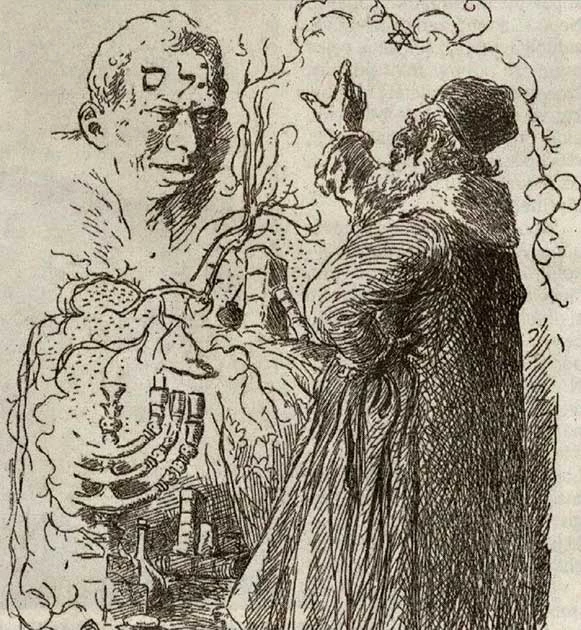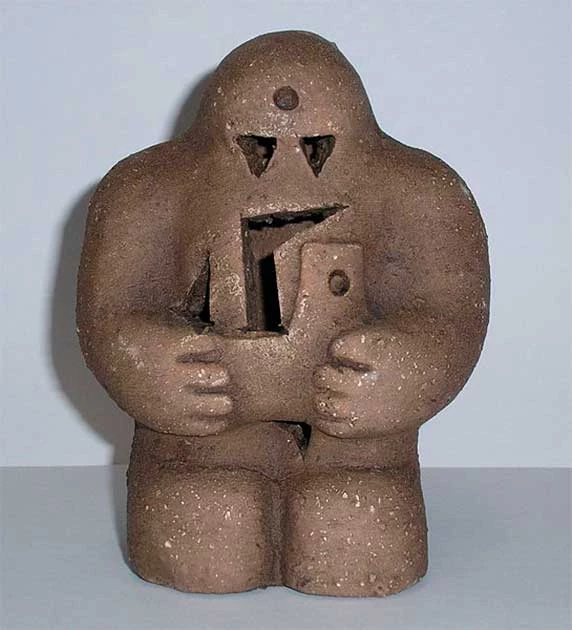Golems, creatures brought to life through Jewish ritual, have captivated audiences for centuries with their mysterious origin and powerful presence. Originating in Jewish folklore, the golem is typically portrayed as a mute, humanoid creature made of clay or mud, brought to life to protect the Jewish community from persecution.
The Golem is one of the most famous creatures of Jewish folklore and has inspired a surprising amount of modern fiction. Where does this tradition come from, and what manner of a monster are we dealing with?
Feet of Clay
In Jewish folklore, a golem is an animated being created from inanimate matter such as clay or mud. The earliest stories revolving around these creatures date back to early Judaism. In the Talmud (the central text of Rabbinic Judaism and the primary source of Jewish religious law), Adam (the first man) is originally created as a golem since he was made from dust “kneaded into a shapeless husk”.
Unlike Adam however, golems are not considered to be human. They are usually depicted as being unable to think for themselves and early golems especially were unable to speak. It is also important to note that not just anyone has the power to create a golem, to do so one must be “close to divinity”.
If one is close enough to divinity, creating a golem isn’t too difficult. During the Middle Ages Jews studied passages from the Sefer Yetzirah (a book of Jewish mysticism) to learn how to create a golem.

The first step was to use the various letters of the Hebrew alphabet to form a shem (one of God’s names) and write it on a piece of paper. Inserting the shem into the golem’s mouth or forehead would then activate it.
According to some Hebrew legends, controlling the golem required inscribing certain Hebrew words onto the golem. For example, certain versions of legends about Golems state that one must write the word emét (אמת, “truth” in Hebrew) on the Golem’s forehead for it to obey commands.
- The Lambton Worm: An Unkillable Medieval Monster?
- Asherah: did the God of the Hebrew Bible have a Wife?
To deactivate the Golem all one needed to do was remove the א from its forehead, changing the word from “truth” to “death”. Once that was done the creature was returned to lifeless clay.
What Were Golems Used For?
Golems were predominantly used to protect Jewish communities from harm. Jews have been victimized repeatedly throughout history and the golem was often depicted as their ultimate defender. Often the golem is shown as having supernatural powers like the ability to turn invisible or raise the spirits of the dead as well as enhanced strength and durability.
Other mystics were said to have used golems as servants. They were supposedly used to carry out manual labor and perform takes that were too difficult or dangerous for humans to do. Solomon ibn Gabirol, an 11th-century Jewish philosopher, was said to have created a female golem which he reportedly used for household chores.
This isn’t to say golems were always described in a totally positive light. Many tales focus on the downsides of creating a golem. These stories often feature a golem that initially follows orders and acts as a hero but then becomes increasingly rebellious and refuses to follow its master’s orders. These stories usually end in tragedy as the golem goes on an indiscriminate killing spree.
Golems and Jewish history
The golem’s primary role as the protector of the Jewish downtrodden means it is closely linked to Jewish history. The Jews have historically been repeatedly oppressed and the golem has been interpreted as a metaphor for the Jewish community’s struggle for survival in the face of persecution and oppression.
The most famous golem story is the Golem of Prague. This legend claims that in the late 16th century the rabbi of Prague created his very own golem from the clay of the banks of the Vltava River. It is said he used the golem to protect the Prague ghetto from antisemitic attacks and pogroms (antisemitic riots aimed at evicting Jews from an area).
Depending on the version of the tale one hears the Jews were about to be either expelled or executed by the current Holy Roman Emperor, Rudolf II. The Rabbi named his golem Josef and it was one of the high-powered versions, able to turn invisible and summon ghosts.
- King Josiah: the Man Who Wrote the Bible?
- Hunting the Tikbalang, Spindly Horse Monster of the Philippines
The Rabbi was cautious to maintain control of his golem. Every Friday evening he deactivated the Golem so that it could rest during the Sabbath. One Friday, the rabbi forgot to remove the shem and feared his golem would break Sabbath.
In some versions of the tale, the golem’s breaking of the Sabbath caused the golem to become a violent monster that went on a murderous rampage. In other versions the golem fell in love and was rejected, causing it to transform into a monster.

For whatever reason, most versions of the tale have the rabbi loses control of Josef and being forced to put him down by removing his shem. The legends then state that the golem’s body was stored in the genizah (attic) of Prague’s Synagogue ready for the next time the Jews were under attack. Up until 1883 (when the attic was renovated and no golem was found) many people believed the golem was still located there.
So the golem represents the historical need of the Jews to defend themselves against persecution. Just like the Jewish community, the golem is powerless to speak out. The golem represents that by using ingenuity and resourcefulness the Jewish people could protect themselves.
The Dangers of Playing God
The story of the golem also has a darker side. Today the folklore surrounding golems has been attributed as being the inspiration for more modern tales like Frankenstein, The Sorcerer’s Apprentice, and even The Terminator.
While the golem is usually created with the best of intentions most tales revolving around them feature the golem losing control. It has been used as a literary device to explore themes of power, control, and the dangers of playing god as well as humility.
Their faith gives the Jews the power and ability to stand up to oppression. However, if that power is misused or taken for granted then disaster is always around the corner. This is an important lesson on the dangers of power no matter what religion a person follows.
Top Image: The Golem could be a powerful ally, as long as you maintained control over the creature. Source: Visualmind / Adobe Stock.